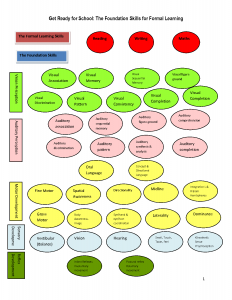What is Rhythmic Movement Training?
Rhythmic Movement Training™ (RMT) is a system of gentle rhythmic movements and reflex integration activities for developing emotional balance, learning ability, ease of movement and sensory integration.
Doing Rhythmic Movements regularly provides profound benefits and helps to increase functioning in the following areas:
| Attention Impulse control Emotional MaturitySensory Processing | Visual Skills Language Development Brain Connectivity Physical Strength and Stamina |
There are a number of things to keep in mind when working with the movements so as to obtain optimal results. A few things to be aware of when working with the movements:
- Be comfortable
- Get feedback about the speed and pressure you are using
- Start with only one or two movements
- Limit the time spent on movements. Start with 2 or 3 minutes (or even less) and work up to 10 to 15 minutes
- We work towards exactness
These five movements cause strong stimulation of the brain stem and neural chassis. This stimulation improves muscle tone, and by stimulating the Reticular Activation System (RAS) it arouses the cortex of the brain and improve attention and awareness of external events.
Directions; Lie on the back with arms along the sides. Place your hand on one side of the rib cage and gently rock back and forth. An alternative for this movement is to reach over and pull towards you from the other side. Or, to push from both sides of the chest. The movement provides a lot of stimulation to the intestines, and so it can bring about a release of constipation. It also provides stimulation to the intercostal muscles between the lower ribs, and to the diaphragm, so can help breathing.
Directions; Lie in the prone (belly down) position with forehead resting on hands. The shoulders relaxed as possible with the armpits resting as close to the floor as possible. It may be necessary to place a small cushion under the chest. Feet are relaxed and turned in. If there is a lot of tension, place feet on a cushion. Hold the waistband at the sacrum area and roll the bottom gently from side to side. Instead of holding the waistband you can also place your hands flat across the sacrum and rock back and forth. Some people like large faster movements, some like smaller gentler movements.
The fetal position for passive rhythmical stimulation is excellent because the flow seldom stops at any level. Many children find it very relaxing.
Directions; Lie on the side with head resting on a pillow or the arm. The most efficient way to do the movement is to rock along the spine from the ischial tuberosity (sit bone) towards the head. The whole back and head are involved in the movement. If the flow is blocked put your other hand on the shoulder and push rhythmically up and down using both hands. If there is dizziness or disorientation stop immediately. Often in the beginning you can only do the movement for 20 or 30 seconds before the vestibular system become overstimulated. By building up slowly the vestibular gets accustomed to the movement and starts to find it easier to process stimulation.
Passive stimulation from the Knees in a Supine (on back) Position
Directions; Lie on the back with arms resting on the floor with knees bent. Put hands on top of the knees and push back and forth gently. If this is difficult alternative positions are: put hands behind the knees on the calves and pull them from there, push from below the knees on the front of the legs or pull from above the knees on front of the legs. Get feedback as it is important to find the best rhythm and hand position. Notice stops in the flow at different levels. When the flow stops at the neck you need to encourage the person you are working with to nod his head and encourage the feeling of the head being connected to the rest of the body. The stopping of the flow in the neck is an indication of an active Tonic Labyrinthine Reflex (TLR) or Symmetrical Tonic Neck Reflex (STNR). This movement also helps to integrate the spinal reflexes.
Passive Rhythmic Movements in a Lying Position
Directions; Lie on back with arms along the sides. Take a steady grip around the balls of the feet and push and rock the body in a longitudinal direction. Try different speeds , but start gently. Very fast and rapid speed is NOT recommended as it provides too much stimulation to the vestibular system. The movement should be smooth and easy, not jerky and difficult.
